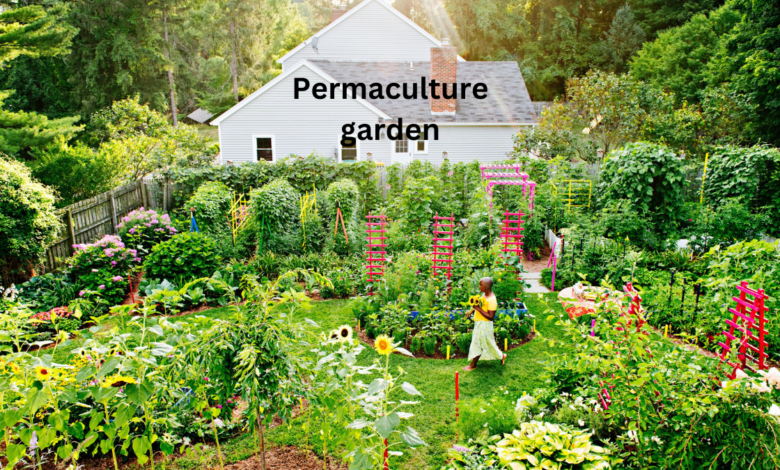The Art and Science of Permaculture Gardens: A Comprehensive Guide

Permaculture gardening represents a harmonious blend of art and science, emphasizing sustainability, ecological balance, and self-sufficiency. This holistic approach to gardening is more than just a method; it’s a philosophy that aims to create resilient, productive ecosystems by mimicking natural processes. This article delves into the fundamentals of permaculture gardens, exploring their principles, design strategies, and the myriad benefits they offer.
Understanding Permaculture Gardens: Principles and Philosophy
Permaculture garden is rooted in principles that promote ecological harmony and long-term sustainability. The philosophy of permaculture extends beyond mere cultivation techniques, encompassing a broad vision for creating ecosystems that work with nature rather than against it. To appreciate the essence of permaculture gardens, it’s important to grasp these foundational principles.
The Philosophy Behind Permaculture
Permaculture, a term coined by Bill Mollison and David Holmgren in the 1970s, combines “permanent agriculture” and “permanent culture.” At its heart, permaculture is about designing agricultural systems that are sustainable and resilient, integrating human activity into the natural world in a way that supports and enhances ecosystem health. The philosophy emphasizes working with natural processes rather than imposing artificial systems.
Permaculture gardens embody this philosophy by creating self-sustaining environments that require minimal external inputs. By mimicking natural ecosystems, these gardens foster biodiversity, conserve resources, and build soil fertility. This approach is rooted in the belief that well-designed systems can meet human needs while preserving the health of the environment.
Core Principles of Permaculture Gardening
Permaculture gardening is guided by several core principles that inform design and practice. These principles are derived from observing and understanding natural systems, and they provide a framework for creating productive and sustainable gardens. Key principles include:
- Observe and Interact: Successful permaculture design starts with careful observation of the site and its natural processes. Understanding factors such as sunlight, wind patterns, and soil conditions helps in creating a design that works with the existing ecosystem.
- Catch and Store Energy: Permaculture emphasizes the importance of capturing and storing energy for future use. This can be achieved through techniques like rainwater harvesting, composting, and using renewable energy sources.
- Obtain a Yield: A well-designed permaculture garden should provide tangible benefits, whether in the form of food, fuel, or other resources. The goal is to create a productive system that meets the needs of its users while contributing to ecosystem health.
- Apply Self-Regulation and Accept Feedback: Permaculture encourages ongoing evaluation and adjustment of the garden design based on feedback from the system. This principle promotes adaptability and continuous improvement.
- Use and Value Renewable Resources: Emphasizing the use of renewable resources and minimizing waste is central to permaculture. This includes practices such as recycling, reusing materials, and incorporating organic matter into the garden.
- Design from Patterns to Details: Permaculture design involves recognizing and working with natural patterns, such as the movement of water and the arrangement of plants. By starting with broad patterns and gradually addressing details, gardeners can create cohesive and functional systems.
The Benefits of Permaculture Gardens
Permaculture gardens offer a range of benefits that extend beyond traditional gardening practices. These benefits include environmental, economic, and personal advantages that contribute to a more sustainable and fulfilling lifestyle.
- Environmental Benefits: Permaculture gardens enhance biodiversity, improve soil health, and conserve water. By creating habitats for various species and promoting natural processes, these gardens contribute to ecological balance and resilience.
- Economic Benefits: By reducing the need for external inputs such as chemical fertilizers and pesticides, permaculture gardens can lower costs and provide a more sustainable approach to food production. Additionally, the emphasis on local resources and self-sufficiency can lead to significant savings.
- Personal Benefits: Engaging in permaculture gardening can foster a sense of connection to nature and promote personal well-being. The process of designing, planting, and maintaining a permaculture garden provides opportunities for learning, creativity, and relaxation.
Designing a Permaculture Garden: Key Strategies and Techniques
Designing a permaculture garden involves a thoughtful and systematic approach that integrates various strategies and techniques. The design process focuses on creating a functional and resilient system that aligns with the principles of permaculture. Key strategies include site analysis, garden layout, and the selection of plants and materials.
Conducting a Site Analysis
The first step in designing a permaculture garden is conducting a thorough site analysis. This involves observing and evaluating the physical and environmental characteristics of the location. Key aspects to consider include:
- Topography: Assess the slope and elevation of the site to understand how water will flow and where erosion might occur. This information is crucial for designing effective water management systems.
- Soil: Test the soil to determine its composition, texture, and fertility. Understanding soil properties helps in selecting appropriate plants and implementing soil improvement strategies.
- Climate: Consider the local climate, including temperature ranges, rainfall patterns, and sunlight exposure. This information guides the selection of plants and the design of microclimates within the garden.
- Existing Vegetation: Observe the existing plants and ecosystems on the site. This can provide insights into soil health, water availability, and the potential for supporting new plant species.
Creating a Functional Layout
Once the site analysis is complete, the next step is to develop a functional garden layout. The goal is to design a layout that maximizes efficiency and productivity while minimizing resource use. Key considerations include:
- Zones: Permaculture design often uses a zoning system to organize different areas of the garden based on their function and accessibility. Zones typically range from Zone 1 (the area closest to the house, with frequent use) to Zone 5 (the natural, less-managed area).
- Patterns and Functions: Incorporate natural patterns and functions into the design. For example, use contour lines for water management, and design plant guilds (groups of companion plants) that support each other and enhance soil health.
- Energy Flow: Design the layout to optimize energy flow and resource use. For example, place water catchment systems in areas where they can effectively capture and store rainwater, and position compost bins in proximity to garden beds for easy access.
Selecting Plants and Materials
Choosing the right plants and materials is a critical aspect of permaculture design. The selection process involves considering factors such as plant suitability, ecological benefits, and resource efficiency. Key points to consider include:
- Native Plants: Opt for native plants that are adapted to the local climate and soil conditions. Native plants require less water and maintenance, and they support local wildlife and pollinators.
- Plant Guilds: Create plant guilds by grouping plants with complementary functions. For example, include nitrogen-fixing plants (such as legumes) alongside plants that benefit from increased soil fertility.
- Materials: Use sustainable and locally sourced materials for garden structures and features. This includes materials for raised beds, pathways, and mulch. Aim to minimize the use of synthetic materials and prioritize recycling and repurposing.
Implementing and Maintaining a Permaculture Garden
Once the design is complete, the next phase involves implementing and maintaining the permaculture garden. This phase focuses on translating the design into action and ensuring the garden remains productive and healthy over time.
Implementation Steps
The implementation phase involves putting the garden design into practice. Key steps include:
- Site Preparation: Prepare the site by clearing debris, amending soil, and setting up garden features such as beds, pathways, and water management systems. Ensure that the site is ready for planting and that all design elements are in place.
- Planting: Follow the planting plan to establish the garden. This includes sowing seeds, transplanting seedlings, and arranging plants according to the design layout. Pay attention to planting depth, spacing, and timing to ensure successful growth.
- Water Management: Implement water management systems such as rainwater catchment, swales, and drip irrigation. Proper water management is crucial for maintaining soil health and supporting plant growth.
Ongoing Maintenance
Maintaining a permaculture garden involves regular care and attention to ensure its continued success. Key maintenance tasks include:
- Soil Care: Monitor soil health and make necessary amendments, such as adding compost or organic matter. Maintain soil structure and fertility through practices such as mulching and crop rotation.
- Pest and Disease Management: Use integrated pest management techniques to address pest and disease issues. This includes promoting beneficial insects, using natural predators, and avoiding synthetic chemicals.
- Harvesting and Replanting: Harvest crops when they are ripe and replant as needed to ensure a continuous supply of fresh produce. Regular harvesting and replanting contribute to the garden’s productivity and resilience.
Adapting and Improving
Permaculture gardening is an iterative process that involves adapting and improving the design based on observations and feedback. Key aspects of adaptation include:
- Monitoring and Evaluation: Regularly assess the performance of the garden and identify areas for improvement. This may involve adjusting plant placements, modifying water management systems, or experimenting with new techniques.
- Learning and Experimentation: Embrace opportunities for learning and experimentation. Permaculture is a dynamic field, and staying open to new ideas and practices can enhance the garden’s success.
- Community Engagement: Engage with the broader permaculture community to share experiences, learn from others, and gain new insights. Participating in community events and forums can provide valuable support and inspiration.
The Role of Permaculture Gardens in Modern Agriculture
Permaculture gardens play a significant role in the broader context of modern agriculture, offering a sustainable alternative to conventional practices. By integrating ecological principles and focusing on long-term resilience, permaculture provides a valuable model for addressing current challenges in agriculture and food systems.

